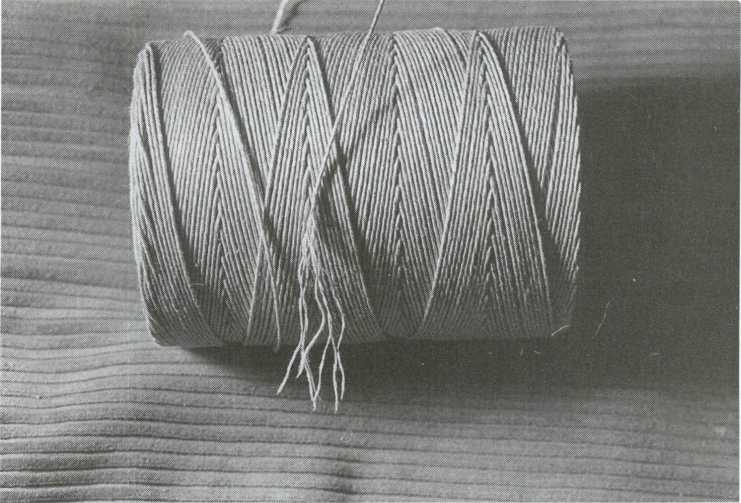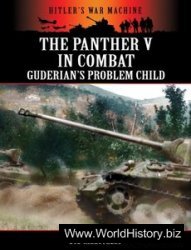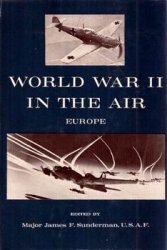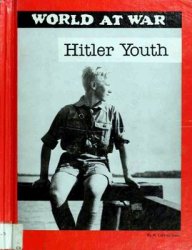Reading through scores of old and new archery texts reveals the desolation of precise bowstring information. Elmer, in Target Archery, gives the most comprehensive report. Gordon, in The New Archery, is a distant second. But with both sources, as with most writers on most aspects of archery, there is much opinion, much quoting, and little or no analysis, investigation, or testing.
A beginning bowmaker, unhappy with the cast of his new 49 lb. bow, stopped in to have it diagnosed. The bow was wide-ringed ash, 20 percent early growth, flat bellied, fairly flat crowned, 65" long, had a slightly working grip, was 1 3/4" wide above the handle, weighted 23 oz, was well tillered and had 1 5/8" set immediately after unstringing. At 27" of draw such a bow, based on the past performance of scores of same-design, same-set bows, must shoot a 500-grain arrow about 147 fps, give or take a couple of fps. Yet this bow managed only 135 fps. Its cast equaled that of a 39 lb. bow, give or take.
This bow was a dud by any standard. And a real dilemma, because on the one hand it had to shoot about 147 fps, yet was shooting only 135 fps. Only one possible explanation existed: the string.
As it turned out the string was made of artificial sinew, and weighed 320 grains. The bow might as well have been strung with a dead snake. Artificial sinew is made of nylon, and nylon s-t-r-e-t-c-h-e-s! And it is heavy. And if thickened enough to overcome much of its stretch it becomes very heavy.
A 170-grain linen replacement yielded a satisfying 148 fps, a 12 fps increase in cast. An astounding 10 pounds of equivalent draw weight.
Apart from durability, the above example illuminates the principle properties required of a good bow string:
A good bowstring must have high strength for its mass, and it must have little stretch during the shot.
A bowstring is more than simple cordage. It has special requirements. Making a superior bowstring taxes the limits of material, and the skill of the stringmak-er, just as with wood and the bowmaker. But a bowmaker has control over many areas of design, each able to affect arrow speed by several fps. Only two such areas exist for the stringmaker: mass and stretch. This is where attention must focus.
In practice, stretch is not a large problem. Excepting nylon, straining fibers to near breaking will induce large, permanent sets. In this way, most of the stretch can be taken from even the most elastic string materials.
String Mass
For a 66", 50 Ib. bow, strung with a 125-grain string, shooting a 28", 500-grain arrow,
A 20-grain rise or fall in string mass will affect arrow speed by about 1 fps.
Coincidentally, a one pound difference in draw weight affects arrow speed by about Ifps.
Which means each 20-grain difference in string mass affects cast by about an equivalent one pound of draw weight.
Twenty-grain differences in string mass has less effect on heavier bows and heavier arrows, more effect on lighter bows and lighter arrows. And the cast-slowing effect of each additional 20-grains is slightly diminished as string mass rises. But "20 grains equals one pound" is a good rule of thumb.
The effect of string mass on arrow speed is about one-third that of arrow mass. Why just one-third? String at the arrow nock accelerates at arrow speed. If the string's entire mass was centered at this point, then string mass would affect cast the same as arrow mass. String near the bow's tips accelerates at tip speed, and has little effect on cast. Sixty five-grains added to each limb tip slows cast by only about 1 fps.
This is useful information. String loops reinforced to ultra-safety will not raise loop mass enough to measurably effect cast.
But why bother with all this? Why care if a string conforms to someone else's idea of perfection? After all, a too-heavy string will do the job. So what if a bow's casf is a few pounds short? Why make a simple thing complicated?
These are wholesome and proper questions. One answer is that once the principles are known, and with a little practice under the belt, it's about as fast and easy to make a good string as a poor one.
Another answer is that a well-planned, well-made string is a small reward, part of the larger reward of a well-planned, well-made bow. Asking, "Why bother making an efficient string," is just another part of the question, "Why bother making an efficient bow.
Yet another reason for making a quality string is that the difference in cast between a well made string and a poorly made string can easily exceed the difference in cast between a $100 stave and a $3 piece of pine shelving; or the most perfectly tillered bow and a wretchedly tillered bow, and so on.
Another answer has to do with the impulse for art and pride. The fibers in a growing stalk of flax, for example, express exquisite natural engineering and architecture. Somehow it seem inappropriate that they should end up as a lumpy, inelegant, slip-shod string.
String Stretch
Word has it that FastFlight'" is faster because it stretches less. After settling in, after taking all the set it is going to take, FastFlight™ stretches about 1.5% to Dacron's 4%, linen's 2%. and silk's 4%. FastFlight™ is faster, but the small difference in stretch between these fibers is not the reason. The reason is its low mass.
A 64" 40 lb. straight bow drawing 27" was strung with a 150 grain silk string. The string was made of twenty strands of 10 lb-test silk, in two moderately twisted plies. It cast a 500-grain arrow 134 fps. The string was removed and repeatedly strained to about 170 lb. pull, effectively removing any residual stretch from the string. When restrung cast remained at 134 lb. The string was removed and detwisted, letting all twenty strands run straight. Cast rose to 135 fps.
The bow was now braced with a 150-grain string, made of wet-spun line linen. Coincidentally, breaking strength was identical to that of the silk string, an estimated 200 Ib. Also two plies twisted moderately. Cast was 135 fps. When strained to near breaking as with the silk string, cast remained unchanged. When the string was detwisted, letting strands run straight, cast rose to 136 fps.
The bow was braced with a same-mass FastFlight™ string, which also cast 135 fps.
Once broken in, the difference in stretch between silk, linen, and FastFlight™ strings had virtually no effect on cast.
But! At 150-grains the FastFlight's™ breaking strength equaled about 1,000 lb. A 75-grain, 500 lb-test version cast 139 fps. At 30 grains and 200 lb. it would have cast about 141 fps.
FastFlight™ is much lighter per strength than Dacron. It is also more resistant to cuts and abrasions. If you're going to use artificial string, FastFlight™ seems the best choice. If made into 300 or 400 lb-test strings, cost will be under $1 per string.
Lower-stretch strings would benefit recurves more than straight bows: both bows strain the string equally at full draw, but high early draw-weight bows slam home harder, stretching the string more, surrendering energy to the string instead of the arrow.
Word also has it that FastFlight™ is dangerous, that it has so little stretch it will break a bow. It's not quite that simple: FastFlight™, Dacron, and linen strings, each at 200 lb-test, will stretch enough to cushion a bow. Each strand of FastFlight™ breaks at about 55 lb. (about 35 lb. for B-50 Dacron). That's only 4 strands. But most stringmakers use 12 or 16 strands, bringing the bowstring to 600 lb-800 lb-test. Such a string is so overly strong, its already low stretch is reduced to virtually nil. As a result, bow limbs do feel more shock. One solution is to use only 6 or 8 strands, straining the string enough to make it give a little, with a side benefit of higher arrow speed due to lower string mass. To prevent its biting into the bow, and the fingers, loops and nocking point would have to be thickened considerably.
The above bow was braced with a string made of highest quality shoemaker's linen. At 200 lb. test this string weighed only 75 grains and cast 139 fps, identical to the same-mass FastFlight. A 200 lb-test Dacron string weighs 80-grains, waxed.
In other words, highest-quality linen string virtually equals Dacron's performance.
The strength per mass of this shoemaker's linen was surprisingly high. Quality linen thread is a rare commodity these days. All the linen previously tested here produced strings with a prewaxed weight of about 150 grains (for an average-length string, with 200 lb. breaking strength).
The first temptation was to suspect this new linen was Dacron or a Dacron-linen mix. Microscopic examination, however, showed both fibers visually identical in structure. The sure-fire test for synthetic materials was then applied: When burned the smoke of both fibers smelled pleasantly organic, not pungent-ly plastic. Elmer talked of 70-grain bow strings, but I had assumed he meant very light, dangerously strained flight shooting strings.
This best-shoemaker's string was made of Irish linen, from Ireland. Despite its strength it is soft, supple and cushiony. Some brands of shoemakers' linen are hard and saw-like, and best kept parallel, as in an endless string, not reverse twisted.
This is a satisfying continuity: on the other side of the dark fiberglass void, writers earlier in the century reported Irish linen as being superior. Current books on the subject report France, Belgium and Holland still growing substantial flax crops, and that the finest quality is sent to Ireland for spinning.

Non-Irish shoemakers' lockstitch brands are hard, and weaker to varying degrees than the Irish.

Made of full-length strands of hemp, this traditional Japanese bowstring needs little twisting (courtesy Grayson Collection)
Traditional Japanese bowstrings are made of full-length hemp. They look to be a single, large simple-ply. However the string's central core is twisted in the opposite direction from that of its surface. This string will not change length when twisted, and should not twist in the fingers when drawn. These may be the reasons for this unusual design. Or this design may have been a clever means of curing the thicker-is-weaker problem;
The single-ply inner core is spun up first, and tighter than needed. The outer layer is added, then spun in the opposite direction. As with standard two-ply cordage, it will not twist far before its now larger diameter resists being twisted, soon yielding neutral twist. The final result being that both inner and outer fibers are more evenly strained, yielding less dead weight.
This design could possibly be idealized by progressively adding surface fibers to each ply as twisting proceeds. If done correctly each fiber layer would end up strained with equal tension.
This principle, if not this exact design, needs exploring.

"Reel" and rosin box for Japanese string (courtesy Grayson Collection). 216
MARGIN OF SAFETY
The old rule is that string strength should be four times draw weight. A 50 lb. bow, for example, needing a 200 lb. string. This allows for a comfortable safety margin on a straight-stave longbow. Slimmer margins were accepted for flight shooting. Sometimes very slim. When going for a new record string weight was reduced dangerously low. So low that strings often broke during the first, or subsequent shots, endangering the bow.
A bowstring is under greatest strain after release, as bow limbs slam home, jerking the string taut. But the force on a bowstring at that moment of "string impact" is determined primarily by the bow's early draw weight. If a bow is harder to pull early in the draw, it will impact with more force, and vice-versa. For this reason a lower-weight recurve, for example, can require a stronger string than a heavier straight-stave bow which follows the string.
String angle also affects needed string strength. Low-strung bows and long bows bring more leverage to bear against the string, causing higher string strain both when braced and early in the draw.
Different bow designs do need different strength strings per pound of draw weight. But until the time consuming tests needed to determine exact figures are done the following rule of thumb is likely adequate. Based on a draw length of 28", and computed for a reasonable margin of safety, string strength should equal:
Draw weight at 15", times ten.
Using this formula, a 50 lb. straight-stave bow with negligible string follow will weigh about 20 lb. at 15", times ten, equals 200 lb. Perfect!
A same design and weight bow having four inches of follow will weigh about 15 lb. at 15". A 150 lb. test string would do for this bow.
A reflexed and recurved 50 lb. bow might weigh 35 lb. at 15", times ten, equals 350 lb. A comfortably safe string for such a hard hitter.
These figures are for safe, durable, long-life strings. For flight shooting, string mass can be reduced by as much as one-half. Such a light string is far more likely to break, and will likely take the bow along with it.
A stronger string is needed when shooting a lighter arrow, because the bow slams home faster and harder. Weaker strings will suffice for heavier arrows.
Very thin strings sing like guitar strings on release. Very thick strings are dull and quiet.
Low braced strings are quieter, and cast faster arrows.
BOWSTRING DESIGN AT A GLANCE
Breaking strength to equal weight at 15", times ten. Individual threads of about 5 lb. test.
No more than seven sub-plies, or seven main plies Reinforce loop by 25 to 100%, timberhitch by 50 to 100% Serve arrow nocking point.
Wax plies lightly before twisting, rub till wax soaks in.
MAKING BOWSTRINGS Single-ply Cordage
Single-ply cordage is simply a cylinder of twisted fibers. It is quick to make, fairly durable in its body, but even when held together by knots this string tends to unravel at the nocks.
There are several near-solutions to this problem: Make several turns around the nock before tying off. Thicken these areas with extra fiber. Serve these areas. Reverse twist only these areas. Or add wax or glue.
Hemp fibers are often six, eight, even ten feet long. A single-ply cord of such full-length fibers is in no danger of losing strength by unraveling, but even here special attention is needed at the nocks.
With any of the strings mentioned here, a good finishing touch is to pull the finished string to about 4/5 of its estimated breaking strength. For two reasons:
One, if the string is going to break find out now, before putting a good bow at risk. Two, such pre-stressing strains the string far more than when in service. As a result the string takes a set; a lot or a little, depending on the type fiber used. This permanently removes most of the elasticity from a string, resulting in less stretch when fired. With experience, this amount of stretch can be planned for when determining initial ply length. It's important the string be pre-stressed AFTER it is made. This lets small disparities in fit and tension resolve themselves. Such near-breaking does not make the string more likely to break later when in use.
Straight Cordage
Standard cordage of two, three, or more plies. Simple or complex. Loops or knots are added when ready to brace the bow.
The Endless String
All strands in an endless string are parallel, each pulling independently. As a result, each is free to break at its weakest point. For this reason strands should be multi-ply cords, preferably of five to seven plies so that weak points in each ply are reinforced.
Fully home-made, efficient endless strings cannot be practically fashioned without first using a spinning wheel, or such, to create the needed 50-plus yards of multi-ply string. If unable to create such multi-ply string it would be best to use commercial Dacron, or multi-ply linen string, especially shoemakers' lockstitch cord.
Many archers and writers of the past and present have assumed the loop of an endless string is weaker than the string itself. The following argument is presented:
The loop is only half as thick as the main string, therefore only half as strong. For the loop to have sufficient strength, string thickness has to be doubled, doubling the entire string's mass in the process.
This seems to make perfect sense, and if my engineer friend, Dick Baugh, hadn't set me straight on the matter the above argument might have stood. Many a fight, by the way, has been started down at The Bowmaker's Bar over just this subject.
It's easy to prove that an endless string's half-thickness loop is a strong as its full-thickness body: Determine the strength of a strand of string. Loop it over a smooth hook of a pull-scale, two strands handing down. Pull on both strands, noting scale weight at the breaking point.
This seems unfair, two strands against the loop's single strand, but the single strand will hold its own. Breaking strength will be double that of a single strand broken in a straight pull. Almost! Minor abrasion takes place where loop meets nock, and bunching, crushing pressures lower loop strength just slightly. This require loops to be slightly thickened, by thickening the whole string. A soft serving should be used to cushion the loop.
The Turks, and other composite bowmakers, used endless strings, usually of silk. These strings were made short, then attached to the bow with an auxiliary "Oriental knot." (see "Knots", to follow) An endless string has several valuable features:
1) A bowstring can be made to exact length.
2) If laid out carefully, tension is distributed evenly at all point on all strands, theoretically resulting in slightly less string mass.
3) By definition an endless string is not twisted. Each strand is therefore more like a bar than a coil. An endless string will therefore have slightly less stretch when shot.
4) An endless string requires less skill to make than a Flemish string.
Is the endless string better than the Flemish string? In other words, is it stronger per mass, is it more durable, is it easier, faster, and cheaper to make?
There are trade-offs with each design. Performance differences depend more on the experience of the maker than inherent benefits of the design.




 World History
World History









